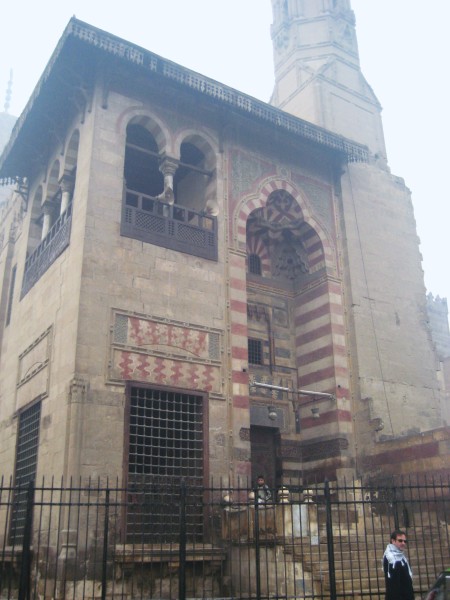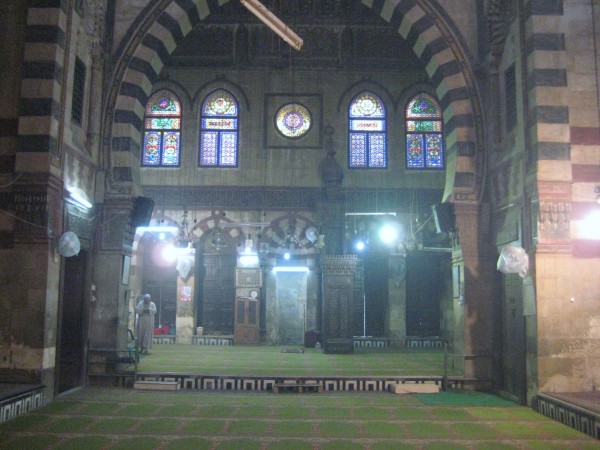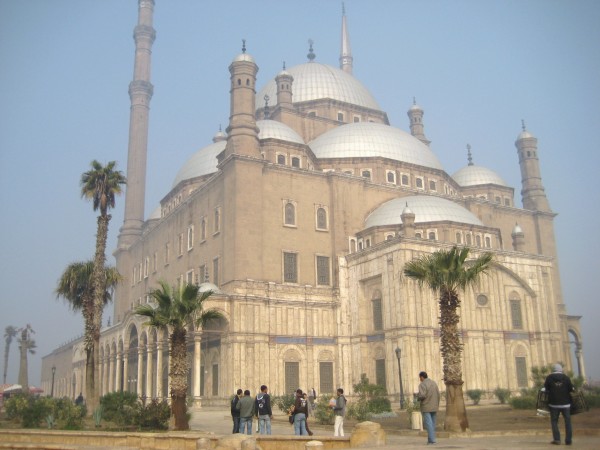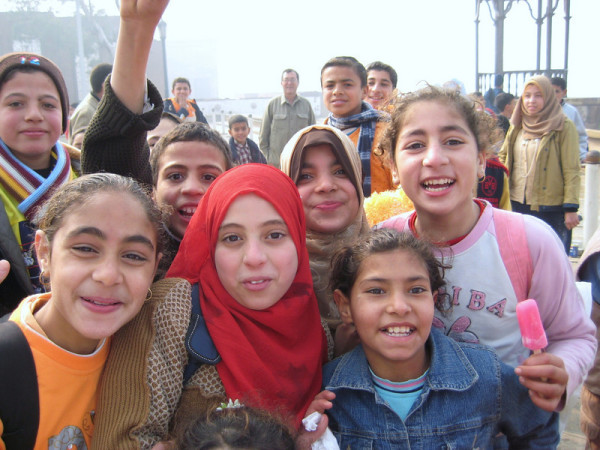
I was exhausted by the time I arrived in Cairo. First, an overnight flight from Chicago to Paris. Then, a long layover in Paris during which I spent most of the time snoozing on some uncomfortable chairs in the transit area, using my shoulder bag as a pillow. Finally, my bleary-eyed self walked off the plane in Egypt around 8:30 p.m. after close to 24 hours in transit. Luckily, I purchased my visa back in Chicago, so I just made a stop in the restroom and at an ATM before passing through passport control. As I exited on the other side, my suitcase was already there waiting for me.
Customs was a breeze and I soon spotted a nice Egyptian man holding a sign with my name and the Hotel Longchamps logo on it. The cost of the pickup service was only $12 and I figured it was worth it to avoid potential scams by taxi drivers at the airport – especially since this was all new to me: visiting country where I couldn’t read the alphabet, much less speak the language. After earlier trips through much of western Europe and Australia, visiting Egypt was my first trip to a “non-Western” country. I would be lying if I said I wasn’t nervous.
I followed Ashram out of the airport and down the street to a car where his young son Yousef was waiting inside. They drove me to my hotel, giving me a nice narrative in broken English along the way. The sky was already black so I couldn’t see much, but Ashram pointed things out like President Mubarak’s residence, a house where Yasser Arafat once lived and the largest mosque in Cairo.

The next morning, I jumped right into exploring the massive city that was Cairo. I had arranged for a guide and driver for the day to take me to Islamic Cairo, Coptic Cairo and the City of the Dead – places I would not visit with my group tour that would start a couple days later. Colin was a nice Aussie man, around fifty or so, who greeted me enthusiastically despite the cloudy, drizzly skies that threatened to put a damper on my first day in Egypt. We headed to the City of the Dead first – this is the northern cemetery in the city where people actually live among the tombs. Colin didn’t have to tell me that this was one of the poorest areas of Cairo. We eventually stopped at the Mausoleum and Mosque of Sultan Qaitbey, where a guard awoke a caretaker to unlock the mosque and lead us inside. As with all mosques, I removed my shoes upon entering, not realizing that my feet would soon be soaking wet. The roof in the mosque was leaking from the rain and, as a result, the carpets were all quite damp. This was the first time I could recall visiting a mosque, so Colin explained many of the traditional features, such as the niche that always faces Mecca, the pulpit and the separate area for women to pray.

From the City of the Dead, we moved on to the Citadel, a large fort with several mosques to visit. On a clear day, it would also offer a nice view of Cairo but alas, it was not a clear day. As we were leaving the Mohammed Ali Mosque, I was accosted by young schoolchildren there on a field trip – all of whom wanted to shake my hand, tell me hello and ask what my name was. I would have loved to try to talk to them some, but Colin quickly ushered me away. I suppose it was for my own protection, but it was disappointing.


It was also disappointing that we didn’t see much more of the area known as Islamic Cairo. I knew from my guidebook that there was much more to see besides the Citadel but I wasn’t quite confident enough to press the issue with Colin. Instead, we moved on to Coptic Cairo, an area with many historically Coptic Christian sites. At the Hanging Church, Colin pointed out that it had a niche built into it similar to the mosques and explained that the niche actually faces Mecca just like in the mosques.
After a few more churches in Coptic Cairo, we moved on to the Khan el Khalili bazaar – the most famous bazaar in Cairo. Many shops were closed because it was a Sunday, which meant it was not nearly as crowded as usual. I was actually glad for that because it was still pretty crowded and felt like a maze, but the relative lack of crowds meant I was sort of able to get my bearings. We stopped at a restaurant within the bazaar for lunch and, not knowing much about Egyptian food, I just let Colin pick out what we would eat. I ended up with some delicious freshly-baked bread, hummus, baba gannoush (eggplant), some kind of artichoke salad and some feta cheese things that could have eaten forever! To drink was fresh strawberry “juice” which was really more like a smoothie and totally hit the spot. After lunch, we walked around the bazaar some more and Colin pointed out where I could find jewelry, alabaster, spices and boxes. I made mental notes so I could return when I had a free day on my group tour.

By the time I returned to my hotel in the late afternoon, I was completely exhausted, but eager to see more. And while I would have love to have tried even more Egyptian food for dinner, I was so tired and unsure of the surroundings near my hotel that I only made it as far as the Burger King across the street. Shame on me.
Note: I visited Egypt in January 2008, prior to the revolution. This post was originally published in 2010.
